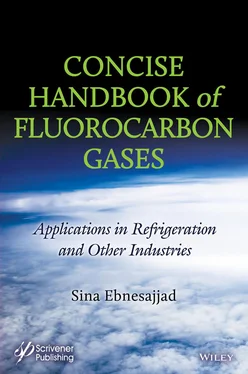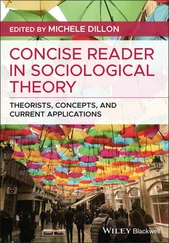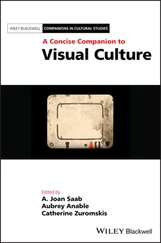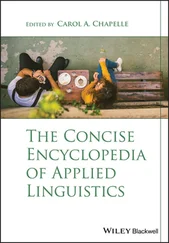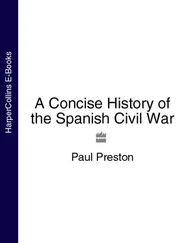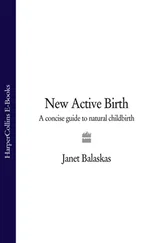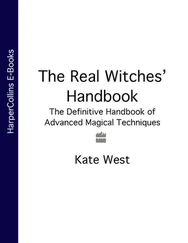1 Cover
2 Title Page
3 Copyright
4 Preface
5 1 Introduction 1.1 Terminology 1.2 Production and Consumption Statistics of Fluorocarbons 1.3 Production and Consumption Statistics of Fluoropolymers 1.4 Production and Consumption Statistics of Fluoroelastomers 1.5 Production and Consumption Statistics of Fluorinated Coatings 1.6 Specialty Fluorochemicals References
6 2 Classification and Description of Commercial Fluorinated Compounds 2.1 Fluorine and Fluorochemicals 2.2 Fluorocarbons 2.3 Designations for Fluorocarbons 2.4 Fluoropolymers and Fluoroelastomers 2.5 Fluorinated Coatings 2.6 Summary References
7 3 Fluorine Sources and Basic Fluorocarbon Reactions 3.1 Role of Fluorine in Fluorocarbons 3.2 Fluorine Sources 3.3 Fluorocarbon Compounds 3.4 Hydrofluoric Acid 3.5 Aliphatic Fluorinated Organic Compounds 3.6 Synthesis of Fluorocarbons References
8 4 Applications of Fluorocarbon Gases and Liquids 4.1 Refrigeration and Air Conditioning 4.2 Oil in Refrigerants 4.3 Monomers and Intermediates 4.4 Foam Blowing 4.5 Aerosol Propellants 4.6 Fire Extinguishing Agents 4.7 Cleaning and Drying Solvents 4.8 Carrier Fluids/Lubricant Deposition 4.9 Heat Transfer 4.10 Etchants 4.11 Medical Applications 4.12 Usage of HCFCs and HFCs 4.13 Breakdown of Fluorocarbons in Applications 4.14 Summary References
9 5 Refrigeration Cycle and Refrigerant Selection: How Refrigerant Gases Work? 5.1 Refrigeration Cycle 5.2 Selection of Right Refrigerant 5.3 Refrigerant Blends 5.4 Comparison of Refrigerator and Air Conditioning Systems References
10 6 Preparation of Fluorocarbons 6.1 Introduction 6.2 Classification of Fluorocarbons 6.3 Preparation of Chlorofluorocarbons (CFCs) 6.4 Fluorocarbon Replacements of CFCs 6.5 Substitutes for CFCs: HCFC and HFC 6.6 Preparation of Hydrofluoroolefins (HFOs) 6.7 Preparation Perfluorinated Alkanes 6.8 Summary References
11 7 Properties of Fluorocarbons
12 8 Environmental, Safety, Health and Sustainability 8.1 Montreal Protocol 8.2 Ozone Depletion 8.3 Global Warming 8.4 Phase Out of Old Fluorocarbon Gases 8.5 Summary References
13 9 Fluorocarbon Blends 9.1 General Blend Characteristics 9.2 Low GWP HFO and HFO/HFC Blends 9.3 Flammability of Blends References
14 10 Substitute Fluorocarbons and Other Compounds 10.1 SNAP Program (EPA, www.epa.gov/snap/overview-snap) 10.2 Guiding Principles of the SNAP Program? 10.3 EPA’s Criteria for Evaluating Alternatives? 10.4 Alternatives for Refrigeration 10.5 Alternatives for Air Conditioning
15 11 Future Directions of Fluorocarbons11.1 Introduction 11.2 Inception and Evolution of Fluorocarbons 11.3 Classification of Refrigerants 11.4 Natural Refrigerants 11.5 Phase Out of Fluorocarbon Gases 11.6 Future Directions of Refrigerants 11.7 Conclusions References
16 Appendix I
17 Appendix II: OzonAction Kigali Fact Sheet 6
18 Appendix III: PARIS AGREEMENT
19 Index
20 End User License Agreement
1 Chapter 1Table 1.1 Examples of commercial fluorochemicals.
2 Chapter 2Table 2.1 Examples of various acyclic alkane fluorocarbons.Table 2.2 Examples of main commercial classes of fluorocarbons [7].Table 2.3 List of hydrochlorofluorocarbon (HCFC) refrigerants [8].Table 2.4 List of Hydrofluorocarbon (HFC) refrigerants [8].Table 2.5 Main applications for HFC and PFC substitutes1 for Ozone Depleting Flu...Table 2.6 Propene series isomers [10].Table 2.7 Effect of increasing fluorine content in polymers.Table 2.8 Fundamental properties of polytetrafluoroethylene.
3 Chapter 3Table 3.1 Atomic properties of fluorine and other elements [4].Table 3.2 Atomic properties of fluorine and other elements [4].Table 3.3 Typical physical properties of hydrogen fluoride and hydrofluoric acid...
4 Chapter 4Table 4.1 Applications of commercial Chlorofluorocarbons (CFC).Table 4.2 Highest consumption Hydrochlorofluorocarbons (HCFC).Table 4.3 Highest consumption Hydrofluorocarbons (HFC).Table 4.4 Highest consumption Hydrofluoroolefins (HFO).Table 4.5 Consumption of fluorocarbons in the United States, Canada, and Mexico,...Table 4.6 Classification of refrigerants according to the American Society of He...Table 4.7 Breakdown of fluorocarbon consumption as refrigerants and potential su...Table 4.8 Consumption of fluorocarbons as monomers for manufacturing fluoropolym...Table 4.9 Alternative blowing agents to fluorocarbons for polymer foam manufactu...Table 4.10 Polymer types and applications of blown foams [14].Table 4.11 Estimates of consumption of fluorocarbon blowing agents in 2002 and 2...Table 4.12 Common commercial aerosol propellants beyond HFC’s [19].Table 4.13 Halon replacement cut-off dates [24].Table 4.14 Properties of halotron BrXTM [25].Table 4.15 Properties of NovecTM 1230 fire protection fluid [27].Tables 4.16 Plastic Compatibility with VertrelTM MCA after immersion for 15 minu...Tables 4.17 Elastomer compatibility with VertexTM MCA after immersion for 1 week...Table 14.18 Environmental properties of Vertrel* XF [36].Table 14.19 Physical, environmental, and safety properties of Opteon™ SF33 [38].Table 4.20 Solubility of typical silicone fluids in Vertrel™ X-Si at room temper...Table 4.21 Properties of hexafluoroethane (R116).Table 4.22 Properties of fluoroform (R23).Table 4.23 Properties of octafluorocyclobutane (RC318).Table 4.24 Properties of hexafluorobutadiene.Table 4.25 Fluoro-ether anesthetics [52].Table 4.26 GWP-weighted” breakdown of HCFCs and HFC consumption expressed in ton...
5 Chapter 5Table 5.1 Examples of candidate refrigerants with low ozone depletion potential ...Table 5.2 Comparison of first law efficiency in terms of COP of both systems [6]...Table 5.3 Examples of refrigerants types with low or zero ODP [9].
6 Chapter 6Table 6.1 Name and ASHRAE codes of chlorofluorocarbons [4].Table 6.2 Name and ASHRAE codes of hydrochlorofluorocarbons [4].Table 6.3 Name and ASHRAE codes of hydrochlorofluorocarbons [4].Table 6.4 Name and ASHRAE codes of hydrochlorofluorocarbons [4].Table 6.5 Name and ASHRAE codes of hydrofluorocarbons [4].Table 6.6 Name and ASHRAE codes of hydrofluoro-olefins [4].Table 6.7 Product composition of conversion of chlorofiuorocarbons vs reaction t...Table 6.8 HCFC and HFC replacements for CFCs [21].Table 6.9 Examples of reaction conditions for HCFC preparation and product compo...Table 6.10 Examples of reaction conditions and their impact on conversion and pr...Table 6.11 Elemental analysis of the catalyst by x-ray photoelectron spectroscop...Table 6.12 Conversion rate of the isomerization of HCFC-123a to HCFC-123, [42].Table 6.13 Conversion rate of HCFC-124a to HCFC-124 using a catalytic liquid-pha...Table 6.14 Ratio of HCFC-124/HCFC-124a in a catalytic gas phase process [46].Table 6.15 Results of Conversion of HFC R-134 to HFC R-134a using a fluorinated ...Table 6.16 Results of fluorination of trichloroethylene with HCFC-133a Recycle [...Table 6.17 Analysis of products of hydrofluorination of 1,1,1,2,3,3-hexafluoropr...Table 6.18 Conversion of 2,2,3-trichloro-1,1,1,3,3 pentafluoropropane to 1,1,1,3...Table 6.19 Analysis of reaction products of chlorofluuorination of 1,1,1,3 hydro...Table 6.20 ASHRAE Legend key for halocarbons in Table 6.19 [56].Table 6.21 Perfluorinated alkane compounds [76],
7 Chapter 7Table 7.1 Highest consumption chlorofluorocarbons (CFCs).Table 7.2 Highest consumption hydrochlorofluorocarbons (HCFC).Table 7.3 Highest consumption hydrofluorocarbons (HFC).Table 7.4 Highest consumption hydrofluoroolefins (HFO).Table 7.5 Properties of R-11 - Trichloromonofluoromethane.Table 7.6 Properties of R-12 - Dichlorodifluoromethane.Table 7.7 Properties of R-13 - Chlorotrifluoromethane.Table 7.8 Properties of R - 113 - Trichloromonofluoromethane.Table 7.9 Properties of R-114 – 1,2-dichloro-1,1,2,2-tetrafluoro-ethane.Table 7.10 Properties of R-115 – 1-chloro-1,1,2,2,2-pentafluoroethane.
Читать дальше
